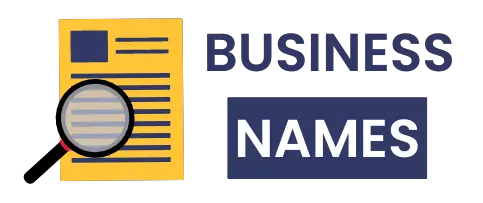What if organizing your entire retirement strategy was as simple as sorting your money into three buckets?
Most people approaching retirement feel overwhelmed. You’ve spent decades saving money, but now you face tough questions. How much should you keep in stocks? When will you need cash? What if the market crashes right when you retire?
The three bucket retirement strategy solves this problem. Instead of complex formulas and constant worry, you organize your money into three simple buckets. Each bucket has one job. One keeps your money safe. One pays you income. One grows your wealth.
Here’s what you’ll learn:
- How the three bucket system works and why it beats traditional methods
- Exactly what goes in each bucket and how much to put there
- When to move money between buckets
- Real examples from retirees at different ages
- The biggest mistakes that can wreck your plan
This system has helped thousands of retirees sleep better at night. It can help you too.
What Is the Three Bucket Retirement Strategy?

The three bucket retirement strategy splits your money into three separate piles. Each pile serves a different purpose. Think of it like organizing tools in your garage – you wouldn’t mix screwdrivers with paint brushes.
Harold Evensky created this strategy in the 1990s. He noticed that retirees made bad decisions when markets got scary. They would sell stocks at the worst times or keep too much money earning nothing in savings accounts.
The bucket system fixes this problem. When you see your money organized by purpose, you make better choices. You don’t panic when stocks drop because you know you have safe money to live on. You don’t keep everything in savings because you see exactly how much safety you need.
Here’s how it’s different from traditional retirement advice. Most financial advisors tell you to own 60% stocks and 40% bonds. But that doesn’t tell you which money to spend first. The bucket system does.
The three buckets are:
- Safety Bucket – Money you need in the next 1-2 years
- Income Bucket – Investments that pay you regular money
- Growth Bucket – Stocks and funds that grow over time
This matters because 73% of retirees worry about running out of money. The average retirement lasts 18-20 years. Markets typically recover from crashes in 2-3 years. The bucket system uses these facts to your advantage.
Example: Meet Sarah and Tom, age 65 with $800,000 saved. They need $60,000 per year to live. Using the bucket system, they put $120,000 in safety (2 years of expenses), $400,000 in income investments, and $280,000 in growth stocks.
Compare this to their neighbor who keeps everything in a 60/40 mix. When the market drops 30%, Sarah and Tom live off their safety bucket. Their neighbor panics and sells stocks at the bottom.
The bucket system isn’t just about math. It’s about psychology. When you can see exactly where your money is and what it’s doing, you make smarter decisions.
Bucket 1 – The Safety Bucket (Your Financial Foundation)

Your safety bucket is like the emergency fund you had during your working years. But now it’s even more important. This bucket holds money you’ll need in the next 1-2 years.
The safety bucket serves one purpose: keep your money safe and available. You’re not trying to get rich from this bucket. You’re buying peace of mind.
🛡️ The Safety Bucket
Your Financial Foundation & Peace of Mind
Covers 1-2 years of living expenses
Bob retired in January 2022 with smart planning:
When stocks crashed in 2022, Bob lived comfortably off his safety bucket while his other investments recovered.
Bucket 2 – The Income Bucket (Your Steady Paycheck)

Your income bucket replaces your work paycheck. This bucket focuses on investments that pay you money regularly. Think dividends, bond interest, and rental income.
The income bucket holds 30-50% of your total portfolio. The exact amount depends on your age and how much risk you can handle. Older retirees usually want more income and less risk.
Income Bucket Strategy
Your Steady Retirement Paycheck
Portfolio Allocation
What Goes in Your Income Bucket
Dividend Stocks
Reliable companies with 25+ year dividend history
Bond Funds
Stable income with principal protection
REITs
Real estate exposure without direct ownership
Preferred Stocks
Higher yields with priority over common stock
Real Example: $500K Income Portfolio
This covers a big chunk of living expenses without selling anything!
Build a Bond Ladder
Result: Steady income + protection from interest rate changes
Watch Out for Dividend Traps!
A 8% dividend yield might look great, but not if the company cuts the dividend in half next year. Focus on companies with long histories of consistent dividend payments.
Smart Tax Strategy
Taxable Accounts: Keep dividend stocks here (better tax treatment)
Tax-Deferred Accounts (401k/IRA): Put bonds here (bond interest taxed as ordinary income)
Bucket 3 – The Growth Bucket (Your Wealth Builder)

Your growth bucket might seem backwards in retirement. Why own risky stocks when you need steady income? Because inflation is the silent killer of retirement plans.
The growth bucket holds 30-60% of your portfolio, depending on your age and risk tolerance. This bucket fights inflation and extends how long your money lasts.
🚀 Growth Bucket
Your Wealth Builder & Inflation Fighter
Depends on your age and risk tolerance
How to Allocate Money Across Your Three Buckets
The right allocation depends on your age, risk tolerance, and personal situation. But here are some guidelines to get you started.

Age 60-65 (Early Retirement):
- Safety Bucket: 10-15%
- Income Bucket: 35-40%
- Growth Bucket: 50-55%
You have 20-25 years ahead of you. You need growth to fight inflation, but you also want some income stability.
Age 65-75 (Traditional Retirement):
- Safety Bucket: 15-20%
- Income Bucket: 45-50%
- Growth Bucket: 35-40%
This is the sweet spot for most retirees. You’re shifting toward income but keeping meaningful growth exposure.
Age 75+ (Late Retirement):
- Safety Bucket: 20-25%
- Income Bucket: 50-55%
- Growth Bucket: 25-30%
You want more safety and income, but you still need some growth for your spouse or heirs.
Portfolio size matters too. If you have $2 million saved, you can take more risks than someone with $500,000. The person with more money can afford to lose some and still be okay.
Health considerations: If you have serious health problems, lean more toward safety and income. If you’re healthy with good genetics, you can afford more growth.
Spouse planning: If you’re married, plan for the surviving spouse. Women typically outlive men by 5-7 years. The survivor needs enough growth to maintain their lifestyle for decades.
Example allocation for a healthy 70-year-old couple with $1.2 million:
- Safety Bucket: $200,000 (17%) – 2+ years of expenses
- Income Bucket: $600,000 (50%) – Generates $35,000/year
- Growth Bucket: $400,000 (33%) – Long-term inflation protection
Life expectancy tables show that a 65-year-old man has a 50% chance of living to age 85. A 65-year-old woman has a 50% chance of reaching 87. Plan for at least one spouse living to 90+.
Healthcare costs add complexity. The average 65-year-old couple will spend $300,000+ on healthcare in retirement. That’s a good reason to keep some growth in your portfolio.
Social Security replaces about 40% of pre-retirement income for middle-income earners. Your buckets need to cover the rest.
Don’t get too fancy with these percentages. Being roughly right is better than being precisely wrong. Review and adjust your allocation every year or two.
When and How to Move Money Between Buckets

The bucket strategy isn’t “set and forget.” You need to move money between buckets to keep the system working.
Annual rebalancing: Once per year, check your bucket percentages. If your growth bucket has done well, it might be too big. If bonds have struggled, your income bucket might be too small. Rebalance back to your target allocation.
Market-based triggers: Sometimes you’ll rebalance more often based on market conditions.
Bull market scenario: When stocks have done really well (up 20%+ for the year), consider moving some gains from growth to safety and income buckets. This locks in profits and refills your spending money.
Bear market scenario: When stocks are down big (20%+ decline), stop taking money from growth. Live off your safety bucket and any income your investments generate. Let your growth investments recover without selling at bad prices.
Tax-efficient moves: Try to harvest tax losses when you can. If you own stocks that are down, sell them and immediately buy similar (but not identical) investments. This creates tax losses to offset gains elsewhere.
Example of bucket refilling:
- Start of year: Growth bucket is $400,000
- End of year: Stocks are up 25%, growth bucket is now $500,000
- Action: Sell $50,000 from growth bucket, add $25,000 each to safety and income buckets
Emergency refill strategy: What if your safety bucket runs low during a long market decline? You have options:
- Use dividends and bond interest to refill safety
- Sell the safest parts of your income bucket (short-term bonds)
- As a last resort, sell small amounts from growth during any market recovery
Sequence of returns risk: This is the danger of bad markets early in retirement. If stocks crash in your first few years of retirement, your portfolio might never recover. The bucket system helps by giving you alternatives to selling stocks at the worst times.
When markets recover: Don’t rush to buy back into growth. Markets often have false starts. Wait for sustained recovery before moving large amounts back to growth investments.
The key is being flexible while sticking to your overall plan. Don’t make dramatic changes based on short-term market moves. But do make tactical adjustments to keep your buckets properly filled.
Common Mistakes That Sabotage the Three Bucket Strategy

Even simple strategies can go wrong. Here are the biggest mistakes retirees make with the bucket system.
Mistake #1: Keeping too much in the safety bucket. Fear makes people over-save in low-yielding accounts. Remember the 2010s? CDs paid almost nothing while stocks doubled. Retirees who kept half their money “safe” lost purchasing power to inflation.
Example: Janet kept 60% of her money in CDs paying 1% while inflation ran 2-3%. She felt safe, but her buying power dropped every year. After 10 years, she could afford 20% less than when she retired.
Mistake #2: Never rebalancing buckets. Some people set up their buckets and forget about them. But markets change the mix over time. Your 40% growth allocation might become 60% after a good stock market run. If you don’t rebalance, you’re taking more risk than you planned.
Mistake #3: Panicking during market crashes. The whole point of buckets is to avoid panic selling. But some people can’t help themselves. They see their growth bucket drop 30% and move everything to “safety.” This locks in losses and misses the recovery.
Real disaster: In March 2020, Steve watched his growth bucket fall from $500,000 to $350,000 in three weeks. He panicked and moved everything to money market funds. He missed the recovery that started in April. His $350,000 would have grown back to $600,000 by year-end if he had stayed put.
Mistake #4: Ignoring taxes. Different investments get taxed differently. Putting dividend stocks in your 401(k) and bonds in taxable accounts is backwards. Bond interest gets taxed as ordinary income (up to 37%). Qualified dividends get taxed at capital gains rates (0%, 15%, or 20%).
Mistake #5: Not adjusting for life changes. Your bucket allocation should change as you age, your health changes, or your financial situation shifts. A 60-year-old and an 80-year-old shouldn’t have the same allocation.
How to avoid these mistakes:
- Set calendar reminders to review your buckets quarterly
- Write down your rebalancing rules when markets are calm
- Focus on your safety bucket during crashes, not your growth bucket
- Learn basic tax rules or work with someone who knows them
- Adjust your allocation every few years based on your changing needs
The bucket strategy works, but only if you follow it consistently. Don’t let fear or greed derail a solid plan.
Your Next Steps: Building Your Three-Bucket Retirement Plan
The Three Bucket Retirement Strategy
Organize Your Money for Growth, Safety, and Income
Why You Need This Strategy
Your Three Buckets Explained
Safety Bucket
“Your Financial Foundation”
- Purpose: 1-2 years of living expenses
- Allocation: 10-20% of portfolio
- Investments: High-yield savings, CDs, Treasury bills
- Goal: Prevent panic selling during crashes
Income Bucket
“Your Steady Paycheck”
- Purpose: Generate regular income
- Allocation: 30-50% of portfolio
- Investments: Dividend stocks, bonds, REITs
- Goal: Replace work paycheck without selling
Growth Bucket
“Your Wealth Builder”
- Purpose: Fight inflation, extend money’s life
- Allocation: 30-60% of portfolio
- Investments: Stock funds, growth stocks
- Goal: Long-term wealth preservation
Allocation by Age
Age 60-65
Age 65-75
Age 75+
5 Steps to Build Your Buckets
Calculate Your Annual Expenses
Add up housing, food, healthcare, and fun money. This determines how much you need from your buckets each year.
Choose Your Age-Based Allocation
Use the age guidelines above, but adjust based on your risk tolerance and health situation.
Fill Your Safety Bucket First
Put 1-2 years of expenses in high-yield savings, CDs, or Treasury bills. This is your peace of mind money.
Build Your Income Stream
Choose dividend stocks, bond funds, and REITs that can generate steady income to replace your paycheck.
Invest for Long-Term Growth
Put remaining money in stock index funds and growth investments to fight inflation over 20+ years.

